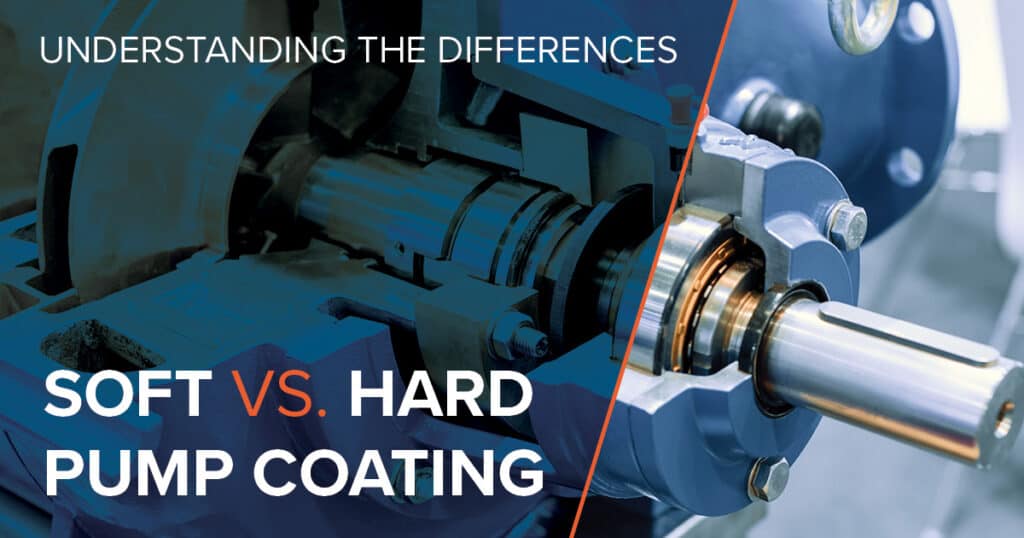Special coatings are often used on pump casings and wetted pump parts. They can provide additional protection against corrosion and abrasion. The right coating can reduce wear and tear, potentially improving overall equipment performance and extending the life span of the pump. It’s important to understand which of the many different types of pump coatings is best suited to your particular machinery and fluid application.
Consider two general categories of coatings: soft vs. hard. This article explains the differences, as well as the pros and cons of each type, to help you make a more informed pump coating decision.
Soft Coatings
Soft coatings generally are comprised of organic polymers (urethane, for example). These coatings cover a relatively low surface hardness. The soft material adheres well to substrates, providing a strong bond between the part surface and the coating itself. These coatings are also more flexible. If the coated surface flexes and bends during operation, a soft coating will be more pliable to avoid cracks and weak spots. Soft coatings typically provide good protection against impact, cavitation, corrosion, and chemical abrasion. A soft coating may be the suitable solution for certain dynamic parts like impellers and mill circuit chutes.
Hard Ceramic Coatings
As you may expect, hard pump coatings fall on the other end of the spectrum in terms of surface rigidity. They are made of inorganic materials like ceramics. They provide a high level of surface hardness to protect equipment surfaces from scratching and linear wear. Typically, you will want to use a hard pump coating in an application that produces little to no impact on the coated surface. However, a hard coating is great when there is a high amount of linear wear. Hard coatings also provide some corrosion resistance for aggressive slurries and certain process materials.
Soft vs. Hard Coatings—The Key Differences
Rigidity is the primary difference between soft and hard pump coatings. Soft coatings are more flexible with lower surface hardness, while hard coatings are the opposite. Which is better may depend on the specific equipment or part being coated. The application is the main deciding factor. Soft coatings are better when applications require more flexibility, cavitation resistance, chemical resistance, and impact resistance. Hard coatings are best to protect against linear wear and abrasion resistance.
Another key difference is the durability of the coating itself. Soft coatings often offer a “self-healing” ability because of the softer material that essentially repairs itself over time. Meanwhile, hard coatings do not provide this capability, even though they provide superior protection and durability against scratching and linear wear.
Selecting the Right Pump Coatings
If you’re thinking about buying a customized pump with coated parts or applying aftermarket coating or coated parts, it’s critical to make appropriate decisions. You want to use the pump materials and coatings best suited for your specific fluid, equipment, and process application.
For all your pump equipment selection and configuration needs—including the best coating solutions—contact DXP Pacific today. Let our expert team show you how to optimize your pump system for many years to come.

